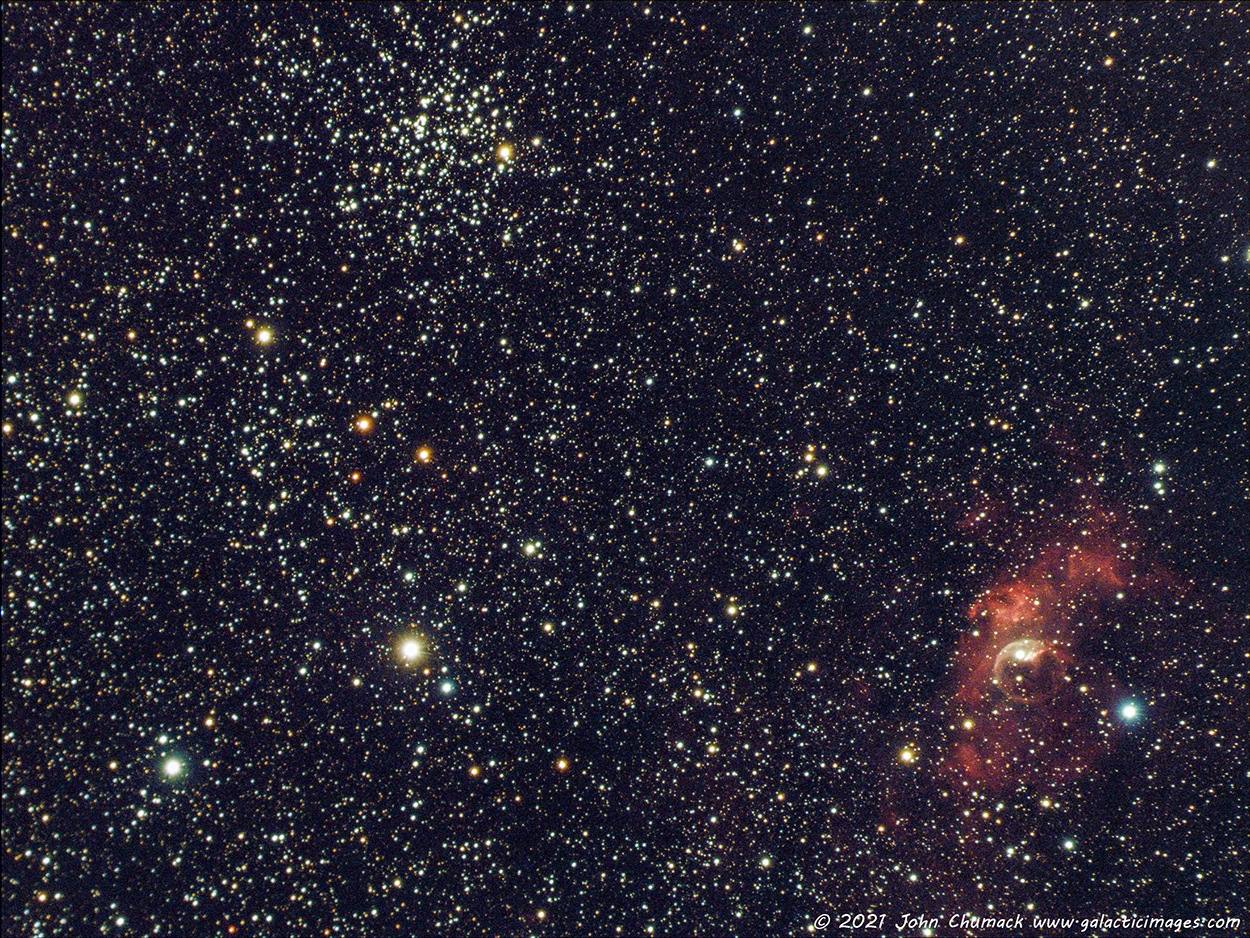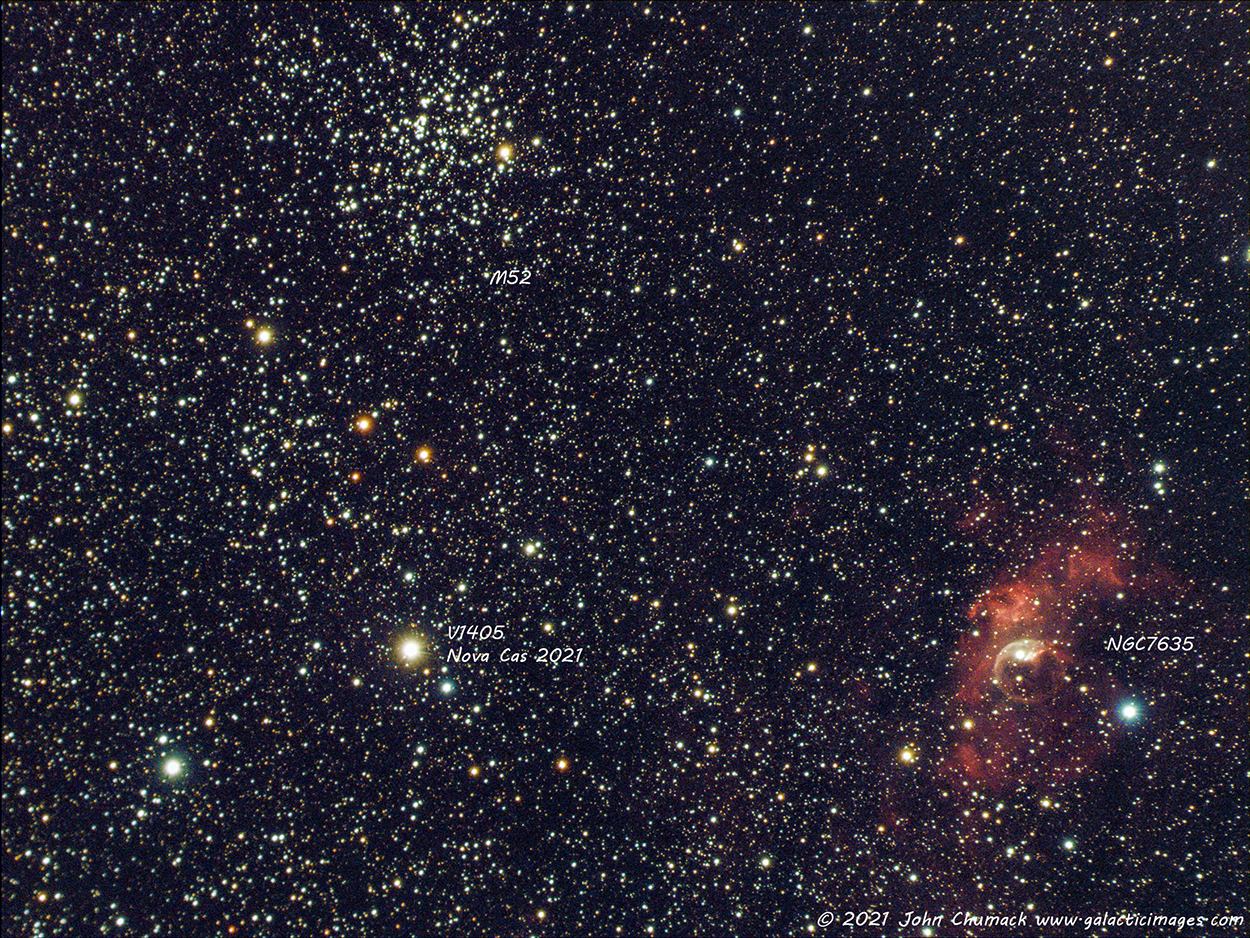Happy International Astronomy Day,
The New Nova Cas 2021 (V1405 Cas)
I give you a bright Nova in Cassiopeia. V1405 Nova Cas 2021
Nova in Cassiopeia has really brightened and is Now at 5.4 magnitude, here is my latest image with M52 & NGC7635 The Bubble Nebula Complex. The Nova is the brightest yellow star in the image.
A new nova in Cassiopeia was discovered on March 18th, is bright enough to see in a small telescope or binoculars.
Nova Cassiopeia 2021, designated V1405 Cas, shone around magnitude 8 on March 21, 2021. It’s located in a star rich region of western Cassiopeia.
Yuji Nakamura of Japan discovered the object at magnitude 9.6 in four images he took with a 135-mm lens on March 18th.
Four days prior, nothing was visible at the location down to magnitude 13.
Now nearly two months later the Nova has gotten much brighter and is currently at 5.5 Magnitude and easily visible in Binoculars.
Within a day, Nova Cassiopeia 2021 received its permanent designation, V1405 Cas.
The new object (V1405) Cas is located at right ascension 23h 24m 48s, declination +61° 11′ 15″.
The New Nova is 0.5 degrees south of the bright open cluster M52(at top) , and 0.5 degrees east of the Bubble Nebula (NGC 7635)(seen on the lower right edge).
I finally was able to see and capture it for myself and by the time I got my first photo 04-02-2021, the New Nova had risen to magnitude 7.9, and again I had taken my latest image on 05-13-2021 when it got even brighter at 5.4 magnitude, it was easily bright enough to see in my 10 x 70mm binoculars.
The nova is circumpolar for mid-northern latitudes and observable all night, but it’s best seen during the early evening and just before dawn, I had only about a little over an hour to shoot it once it cleared the trees, just before dawn came up and washed out the night sky.
Classical novae like V1405 Cas are close binary stars comprised of a compact white dwarf and either a main-sequence star like our Sun or a red giant. The dwarf’s powerful gravity siphons hydrogen from its partner into an accretion disk. Material then funnels from the disk to the dwarf’s surface, where it’s compacted and heated to around 10 million Kelvin, hot enough to trigger explosive nuclear fusion.
102mm Explore Scientific Triplet APO refractor, Bisque ME mount & QHY183C Cooled Cmos color camera. 80 minute exposure.
Best Regards,
John Chumack
www.galacticimages.com








